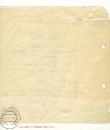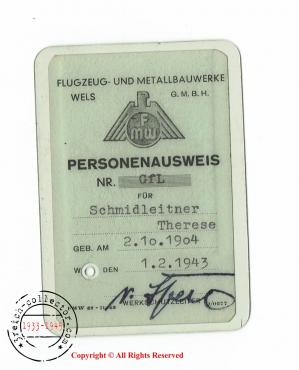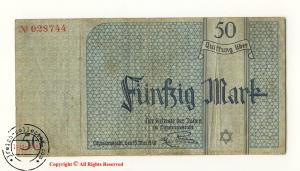Holocaust - Judenrat - Document from the Frysztak - Jewish Social Self Committee !
| Price: | $160.00 |

Frysztak very smal vilage near Strzyzow in Poland .
This document was inssue few month before Germans open ghetto in this vilage.
It deals with the approval of gifts in the form of drugs from the Jewish Social Self.
Rare stamp from JUDENRAT with signature probably of Samuel Baldinger !
Some more about Jewish in this village:
Already in the first days of Nazi occupation, the Nazis executed a few Jews in a synagogue, and on 15 September 1939, 3 Jews of Strzyżów were shot to death.
In the spring of 1940, 9 Jews were murdered in the local kirkut, and in the Winter 1941-1942, four Jews were murdered in the streets of the town. Rabbi Chaim Baruch Halberstam together with his grandson Alter Zewim escaped east to the Soviet zone of occupation but later he came back to Rzeszów and Frysztak.
In 1941, there were 1,322 Jews in the town. The chairman of the Judenrat became Samuel Baldinger.
In 1942, Germans established a ghetto for the Jews in which also Jews collected from nearby villages were put. Jews from Warsaw, who were building a side-track from Wiśniowa to Stępina where a tunnel for the railway was erected by Jews from Frysztak, were already there. In the ghetto more than a half of the Jews were from outside of Frysztak. Its partial liquidation took part on 3 July 1942, when Nazis from military Police from Jasło along with the Ukrainian detachment from the training camp Werkschutz in Moderówka, where one of the training camps of SS Galizien was located, took some Jews approximately 850 people: women, children and the old to the forest in Wawrzyce where they were murdered. During the loading of cars multiple cases of infant killings occurred. Skulls of recently born babies were smashed against the walls of houses. Young Jews were gathered in a synagogue from where they were going to work in a quarry in Cieszyn. Later they were taken to a concentration camp in Płaszów. Another group of about 250 Jews was executed by Nazis on 12 July 1942, in a forest in Krajowice near Jasło. The last son of a rabbi and one of his grandsons were killed. The rest of the Jews were sent on 18 August 1942, to a ghetto in Jasło. In the end, the majority of Jews were killed in a concentration camp in Bełżec.
Thirty-five Jews, who were doing clean-up work in the ghetto in Frysztak after the transportation of the Jews out of the ghetto, were taken to the ghetto of Przemyśl.
Tzadik Chude Halberstam was murdered in Warzyce 29 September 1942. In the autumn of 1942, Nazis and dark blue Police executed 60 Jews who were hiding in nearby forests. On 27 February 1943, Nazis murdered about 35 Jews who were hiding in a dug-out in a forest near Frysztak. In March 1943, three Jews who were given shelter by Maria Bieszczad in Stępin were killed and in July the same year four children were murdered at a cemetery in Frysztak.
In July of 1943, in Cieszyn near Frysztak a branch of a concentration camp in Szebnie was established. There were among others, 150 Jews who worked in a quarry. On 3 August 1943, in a forest in Wawrzyce another group of Jews from Frysztak and Jasło was killed. Five Jewish families and two doctors- Jewish females from Lwów were given refuge by Poles in nearby villages. Franciszek Szarek, the soldier of AK in Glinczek, gave shelter to eight Jews. They were also given help by a local bishop; priest Wojciech Blajer, who granted them with false baptism certificates. However, not everybody in hiding was able to survive the occupation. On 9 January 1943, in Frysztak near Kobyl, Nazis murdered 40 Jews in hiding.







